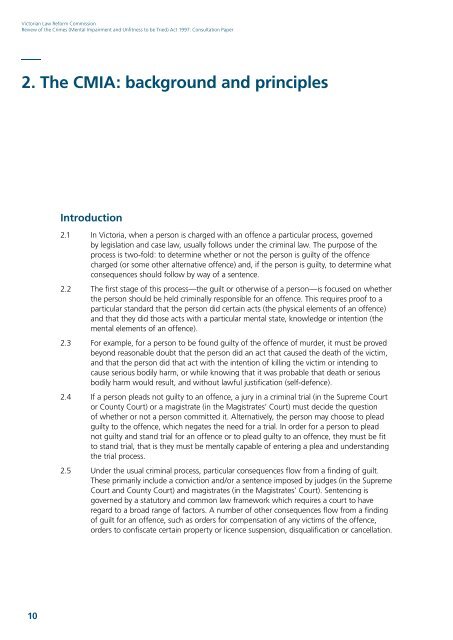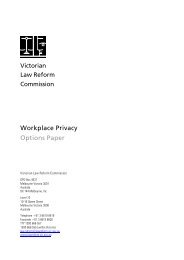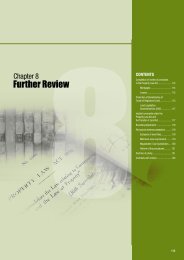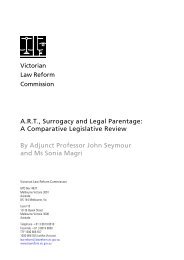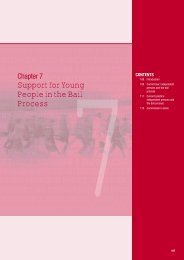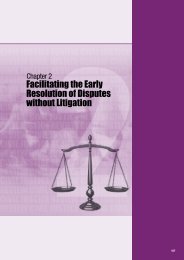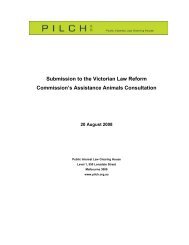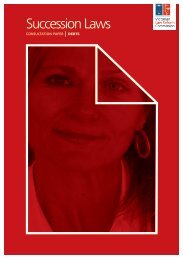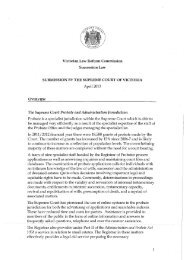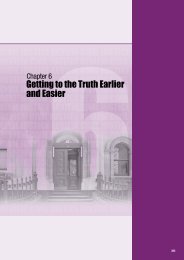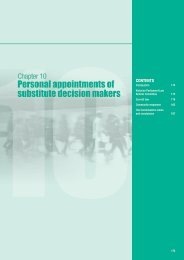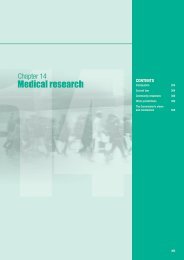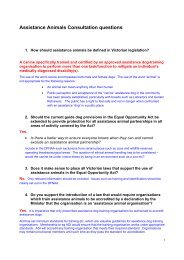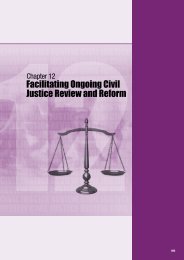Crimes Mental Impairment consultation paper.pdf - Victorian Law ...
Crimes Mental Impairment consultation paper.pdf - Victorian Law ...
Crimes Mental Impairment consultation paper.pdf - Victorian Law ...
You also want an ePaper? Increase the reach of your titles
YUMPU automatically turns print PDFs into web optimized ePapers that Google loves.
<strong>Victorian</strong> <strong>Law</strong> Reform Commission<br />
Review of the <strong>Crimes</strong> (<strong>Mental</strong> <strong>Impairment</strong> and Unfitness to be Tried) Act 1997: Consultation Paper<br />
2. The CMIA: background and principles<br />
Introduction<br />
2.1 In Victoria, when a person is charged with an offence a particular process, governed<br />
by legislation and case law, usually follows under the criminal law. The purpose of the<br />
process is two-fold: to determine whether or not the person is guilty of the offence<br />
charged (or some other alternative offence) and, if the person is guilty, to determine what<br />
consequences should follow by way of a sentence.<br />
2.2 The first stage of this process—the guilt or otherwise of a person—is focused on whether<br />
the person should be held criminally responsible for an offence. This requires proof to a<br />
particular standard that the person did certain acts (the physical elements of an offence)<br />
and that they did those acts with a particular mental state, knowledge or intention (the<br />
mental elements of an offence).<br />
2.3 For example, for a person to be found guilty of the offence of murder, it must be proved<br />
beyond reasonable doubt that the person did an act that caused the death of the victim,<br />
and that the person did that act with the intention of killing the victim or intending to<br />
cause serious bodily harm, or while knowing that it was probable that death or serious<br />
bodily harm would result, and without lawful justification (self-defence).<br />
2.4 If a person pleads not guilty to an offence, a jury in a criminal trial (in the Supreme Court<br />
or County Court) or a magistrate (in the Magistrates’ Court) must decide the question<br />
of whether or not a person committed it. Alternatively, the person may choose to plead<br />
guilty to the offence, which negates the need for a trial. In order for a person to plead<br />
not guilty and stand trial for an offence or to plead guilty to an offence, they must be fit<br />
to stand trial, that is they must be mentally capable of entering a plea and understanding<br />
the trial process.<br />
2.5 Under the usual criminal process, particular consequences flow from a finding of guilt.<br />
These primarily include a conviction and/or a sentence imposed by judges (in the Supreme<br />
Court and County Court) and magistrates (in the Magistrates’ Court). Sentencing is<br />
governed by a statutory and common law framework which requires a court to have<br />
regard to a broad range of factors. A number of other consequences flow from a finding<br />
of guilt for an offence, such as orders for compensation of any victims of the offence,<br />
orders to confiscate certain property or licence suspension, disqualification or cancellation.<br />
10


